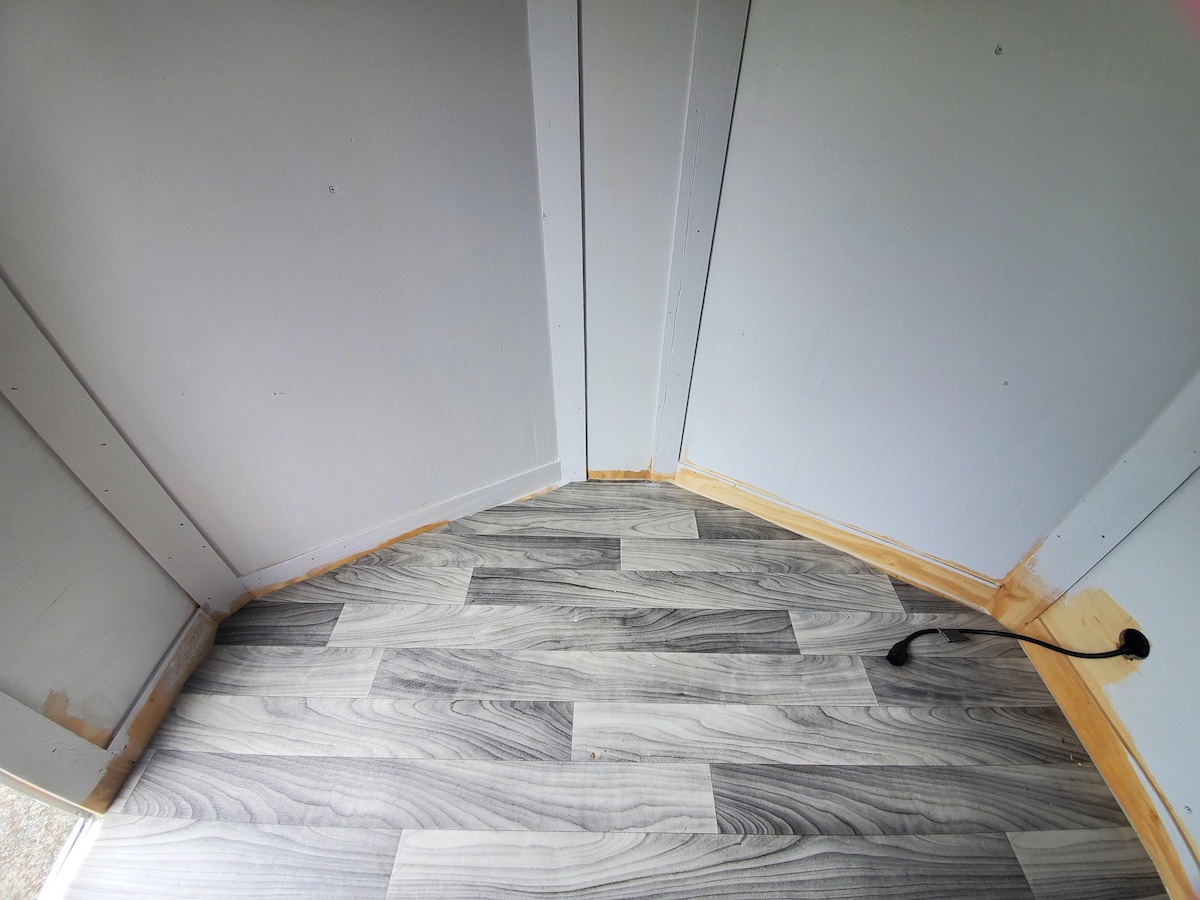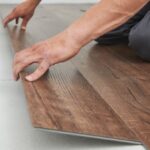As a homeowner, you may be considering installing vinyl plank or vinyl sheet flooring over your concrete subfloor. Vinyl is an affordable, durable, and easy-to-clean option that can upgrade any room’s look. However, some homeowners worry about the risk of moisture issues and mold growth developing beneath vinyl over time. This guide examines how and why mold forms under vinyl on concrete, preventive steps, and solutions if you suspect a problem post-installation.
Table of Contents
How Moisture Gets Under Vinyl Flooring
Vinyl flooring requires a completely dry, moisture-free subfloor for proper installation. Excessive moisture underneath vinyl can lead to several issues:
- Bonding Issues: Moisture prevents the vinyl from adhering to concrete, causing bubbling, peeling, and gaps.
- Mold Growth: Mold spores in the air or concrete can thrive under vinyl, especially in damp spaces like basements.
- Off-Gassing Issues: Moisture interacts with vinyl adhesives, causing off-gassing odors in the home.
While concrete appears solid, it is porous and prone to moisture issues due to factors like:
- Concrete Curing Process: Moisture can get trapped during curing and re-emerge later.
- Hydrostatic Pressure: Groundwater or water tables can push moisture through the concrete.
- Environmental Factors: Spills, floods, and humidity introduce moisture.
Pre-Installation Moisture Testing
Prevent moisture problems by testing concrete before installing flooring:
- Moisture Meters: Quick checks can be done with push-pin moisture meters.
- Calcium Chloride Test: For accuracy, use an anhydrous calcium chloride test (ASTM F1869 standard). Results above 5 lbs per 1,000 sq. ft. in 24 hours indicate a need for moisture mitigation.
Moisture Mitigation Techniques
If tests show damp concrete, moisture control methods can prepare it for vinyl installation:
- Slab Preparation: Grind concrete to open pores, blast it, and clean with an acidic etch solution.
- Vapor Barriers: Apply moisture sealers compatible with vinyl adhesives, like epoxy or urethane coatings, to create a barrier.
- Moisture Membranes: Use DMX plastic membranes embedded in adhesive before vinyl installation.
- HVAC & Ventilation: Keep humidity below 50% and ensure cross-ventilation in crawl spaces.
Example: I installed vinyl plank flooring in my basement five years ago over a damp slab with an epoxy barrier and have had no moisture or mold issues since. Proper moisture testing and mitigation work!
Signs of Moisture & Mold Issues Under Vinyl
Even with preparation, moisture issues can still arise over time. Warning signs include:
- Bubbling or warping planks
- Discoloration beneath vinyl
- Soft or spongy areas
- Musty, moldy, or chemical odors
- Visible mold near edges or walls
If you notice any of these signs, lift a section of vinyl and inspect the concrete. Mold can be cleaned with products like Concrobium Mold Control, but underlying moisture issues may require professional waterproofing.
Preventing Mold Under Vinyl Flooring: Best Practices for Concrete Slabs
To prevent mold under vinyl, follow these guidelines:
- Cure New Concrete: Allow new concrete to cure for 60-90 days before testing.
- Test Moisture Levels: Use calcium chloride tests and humidity probes.
- Prepare Slab if Needed: Grind and clean if moisture exceeds limits.
- Use Moisture Barriers: Apply compatible sealers or plastic sheeting as needed.
- Maintain Low Humidity: Keep below 50% with adequate ventilation.
- Follow Installation Instructions: Install vinyl per manufacturer guidelines, using a polyethylene underlayment for added protection.
Monitor vinyl carefully for the first year after installation, addressing issues like bubbling or separation immediately. By following these steps, you can safely install vinyl over concrete for a long-lasting, mold-free floor. For specific recommendations and installation advice, consult a flooring professional.
FAQ
Why does mold develop under vinyl flooring on concrete?
Mold can develop under vinyl flooring on concrete primarily due to trapped moisture. Concrete, being porous, allows moisture to seep through over time, especially in humid environments, basements, or areas with groundwater pressure.
When moisture gets trapped between the vinyl and concrete, it creates the perfect environment for mold spores to grow. Proper installation, including moisture testing and mitigation, is crucial to prevent mold development.
How can I prevent mold from forming under my vinyl flooring?
To prevent mold, ensure your concrete subfloor is completely dry before installation. Perform a moisture test using an anhydrous calcium chloride test or a push-pin moisture meter, and if needed, apply a moisture barrier like epoxy or urethane sealers. Maintaining low humidity (below 50%) and adequate ventilation in the area, especially in basements or crawl spaces, is also essential to reducing mold risks.
What are the signs that mold might be growing under my vinyl flooring?
Warning signs of mold growth under vinyl flooring include bubbling or warping planks, discoloration or stains visible through the vinyl, soft or spongy areas underfoot, and strong musty or chemical odors.
If you notice any of these symptoms, lifting a section of vinyl and inspecting the concrete underneath can help determine if mold is present, allowing you to address the issue quickly before it spreads.

Chirag Sachdeva is a seasoned digital marketing expert with over 15 years of experience spanning digital strategy, content management, and SEO. Chirag is the founder of Digifly Technology, where he empowers businesses to grow through innovative digital solutions. With a deep understanding of content strategy and market trends.





